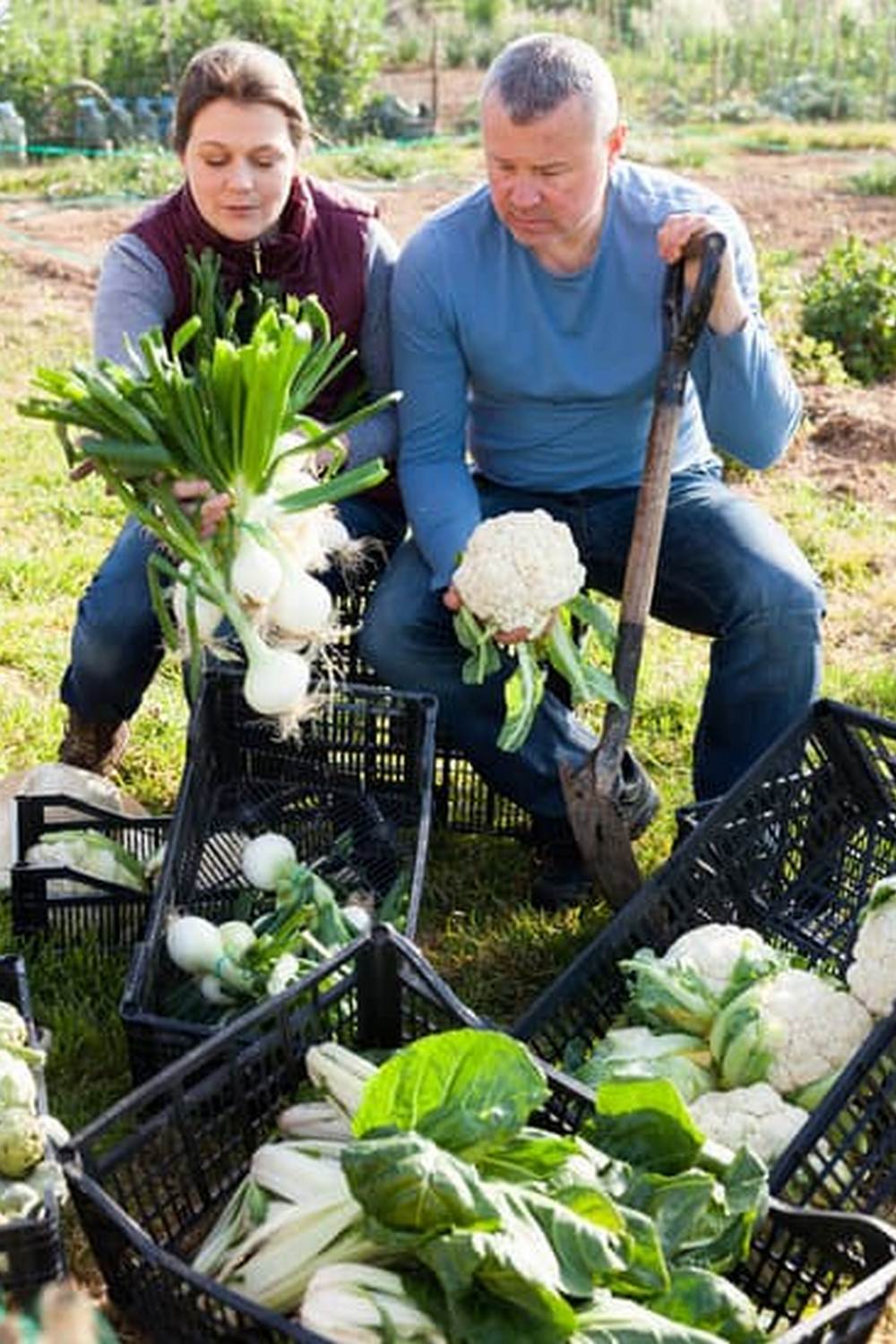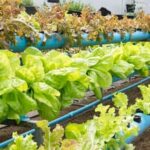School gardens linked with kids eating more vegetables have gained significant attention for their potential to improve children’s dietary habits and overall health. As the focus on childhood nutrition and obesity prevention continues to grow, the role of school gardens in promoting healthy eating choices has become a topic of interest among educators, parents, and health professionals.
These outdoor classrooms offer a hands-on learning experience that goes beyond traditional classroom education. By actively participating in planting, nurturing, and harvesting fruits and vegetables, students not only gain a better understanding of where their food comes from but also develop a greater appreciation for fresh produce. Research has shown that children who engage in gardening activities are more likely to consume a wider variety of fruits and vegetables, ultimately leading to improved nutritional intake.
Moreover, school gardens have the potential to foster a sense of community among students, teachers, parents, and local residents. Through collaborative efforts in planning and maintaining the garden, participants can work together towards a common goal of promoting health and wellness. By creating a space for shared experiences and environmental stewardship practices, school gardens play a vital role in cultivating sustainable behaviors and fostering a greater awareness of the impact of food choices on both personal health and the environment.
Benefits of School Gardens
School gardens have been shown to have a significant positive impact on children’s health and nutrition. Numerous studies have demonstrated that kids who participate in school garden programs are more likely to eat a greater variety of vegetables and fruits.
By actively engaging in the process of planting, caring for, and harvesting produce from the garden, children develop a greater appreciation for and interest in fresh, healthy foods. This hands-on experience can lead to increased consumption of vegetables both in school settings and at home.
Health Benefits
One of the key benefits of school gardens is the improvement in children’s overall health and well-being. By incorporating more vegetables into their diets, students can reduce their risk of obesity, type 2 diabetes, cardiovascular disease, and other chronic illnesses. Additionally, consuming a diverse range of fruits and vegetables provides essential vitamins, minerals, fiber, and antioxidants that support optimal growth and development during childhood.
Psychological Benefits
In addition to the physical health benefits, school gardens also offer psychological advantages for children. Research has shown that interacting with nature through gardening can reduce stress, anxiety, and symptoms of ADHD among students.
By fostering a sense of responsibility for growing plants and nurturing living things, school gardens can promote emotional well-being and boost self-esteem in children. The hands-on nature of gardening allows students to connect with the natural world in a meaningful way while also learning valuable life skills such as teamwork, patience, problem-solving, and creativity.
Educational Value
School gardens offer students a unique educational experience that goes beyond the traditional classroom setting. By engaging in hands-on activities like planting seeds, watering plants, and harvesting vegetables, children not only learn about the life cycle of plants but also develop a deeper appreciation for where their food comes from.
This experiential learning opportunity helps to reinforce important concepts related to nutrition and sustainable practices in a tangible way. Research has shown that children who participate in school gardening programs are more likely to develop positive attitudes towards fruits and vegetables, which can lead to healthier dietary choices.
One of the key educational benefits of school gardens is the opportunity for interdisciplinary learning. Students can engage with various subjects such as science, math, language arts, and even social studies through the lens of gardening.
For example, they can study plant biology and ecosystems in science class, practice measuring and graphing plant growth in math class, or write reflective essays about their gardening experiences in language arts. This holistic approach to education not only enhances academic skills but also fosters a sense of environmental stewardship and interconnectedness with nature.
Furthermore, school gardens provide a hands-on platform for teaching important life skills such as teamwork, responsibility, problem-solving, and patience. As students work together to plan and maintain the garden, they learn valuable lessons about collaboration and perseverance.
These real-world experiences help to cultivate a sense of pride and ownership among students, as they witness the fruits of their labor grow before their eyes. Ultimately, the educational value of school gardens extends far beyond just growing vegetables – it cultivates a lifelong love for learning and healthy habits that can positively impact children’s overall well-being.
Case Studies
Success Story 1: Green Thumb Elementary
At Green Thumb Elementary, the school garden program has made a significant impact on the dietary habits of its students. By actively involving the children in planting, watering, and harvesting fruits and vegetables, the school has seen a noticeable increase in their consumption of fresh produce.
Students are not only more willing to try new vegetables but also develop a sense of pride and ownership over what they have grown. This hands-on experience has translated into healthier eating habits both at school and at home.
Success Story 2: Harvest Hills Middle School
Harvest Hills Middle School is another example of a school that has successfully integrated a garden program into its curriculum. Students at Harvest Hills not only learn about gardening techniques and sustainability but also gain an appreciation for where their food comes from. As a result, the school has observed a positive shift in students’ attitudes towards vegetables. They are more likely to choose fresh produce over processed snacks during lunchtime, leading to overall better nutrition and health outcomes.
Success Story 3: Fresh Start High School
Fresh Start High School faced challenges with student engagement and healthy eating habits before implementing a school garden program. However, after introducing hands-on gardening activities as part of the curriculum, the school witnessed a remarkable change in students’ behavior towards vegetables.
The students became more curious about growing their food and understanding the benefits of consuming fresh produce. The increased vegetable consumption among students not only improved their health but also fostered a sense of community within the school environment.
Community Involvement
School gardens have proven to be more than just a supply of fresh produce for schools; they also serve as a unifying force that brings together students, teachers, parents, and local communities. These gardens provide a shared space where individuals from different backgrounds can come together to cultivate plants, learn about nutrition, and foster connections with each other. When students, teachers, and parents collaborate on maintaining a school garden, it creates a sense of ownership and pride in the community.
Furthermore, school gardens offer opportunities for intergenerational learning and mentorship. Older community members with gardening experience can share their knowledge with younger generations, while children can teach their elders about new plant varieties or sustainable growing practices. This exchange not only strengthens community bonds but also imparts valuable skills and fosters respect for nature among participants.
In addition to fostering community connections, school gardens can serve as a platform for outreach and partnership with local organizations such as food banks, environmental groups, or farmers’ markets. By involving these external stakeholders in garden activities or events, schools can broaden their impact beyond the campus boundaries and create mutually beneficial relationships. This collaboration not only enriches the overall gardening experience but also promotes greater awareness of healthy eating habits and environmental stewardship within the community.
Nutrition Education
School gardens provide a unique opportunity to educate children about healthy eating habits in a hands-on and engaging way. By incorporating nutrition education into the gardening experience, students can learn about the benefits of consuming fresh fruits and vegetables while actively participating in the process of growing their own produce. This interactive approach not only increases children’s knowledge about nutrition but also reinforces the importance of making healthy food choices.
One effective way to integrate nutrition education into school gardens is through interactive lessons and activities that focus on plant growth, harvesting, and the nutritional value of different fruits and vegetables. Here are some ideas for incorporating nutrition education into school garden programs:
- Organize taste tests using produce grown in the school garden to introduce students to new flavors and textures.
- Create opportunities for students to research and present on the health benefits of specific fruits and vegetables.
- Invite guest speakers such as nutritionists or local farmers to share their expertise with students.
By combining practical gardening skills with nutrition education, school gardens can equip children with the knowledge and tools they need to make informed decisions about their diet. These experiences not only encourage kids to eat more vegetables but also foster a lifelong appreciation for healthy eating habits that can positively impact their overall well-being.
As schools continue to recognize the value of integrating nutrition education into their curriculum, school gardens have emerged as a powerful tool for teaching children about healthy eating habits. Through this experiential learning approach, students are not only encouraged to eat more vegetables but also develop a deeper understanding of how food choices can affect their health and overall quality of life.
Sustainability and Environmental Awareness
School gardens serve as more than just a source of fresh produce for schools; they also play a crucial role in promoting sustainability and environmental awareness among students. By actively engaging in garden activities, children can develop a deeper understanding of where their food comes from and how it is grown. This hands-on experience encourages them to think about the environmental impact of their food choices and fosters a sense of stewardship towards the planet.
Here are some ways in which school gardens contribute to sustainability and environmental awareness:
- Reducing Food Miles: School gardens help reduce the carbon footprint associated with transporting food long distances. Students learn about the benefits of consuming locally-grown produce and the importance of supporting nearby farmers.
- Composting: Schools with garden programs often implement composting practices to recycle organic waste into nutrient-rich soil for their plants. This teaches students about the natural cycle of decomposition and the value of reducing waste.
- Biodiversity Preservation: School gardens provide opportunities to grow a diverse range of fruits, vegetables, herbs, and flowers. By cultivating different plant species, students learn about the importance of biodiversity in maintaining healthy ecosystems.
Moreover, school gardens can serve as living laboratories for exploring sustainable gardening techniques such as water conservation, natural pest control methods, and companion planting. Through these practices, students not only learn practical gardening skills but also gain an appreciation for environmentally-friendly approaches to food production. Ultimately, school gardens empower children to become responsible stewards of the earth while encouraging them to make healthier food choices by eating more vegetables.
Tips for Starting a School Garden
School gardens have proven to be a powerful tool in promoting healthy eating habits among children. Through hands-on experiences in planting, cultivating, and harvesting fruits and vegetables, students not only learn about nutrition but also develop a deeper appreciation for where their food comes from.
As countless studies have shown, school gardens are indeed linked with kids eating more vegetables. By engaging in the process of growing their own food, children are more likely to try new types of produce and incorporate them into their diets.
One of the key benefits of school gardens is the educational value they offer to students. These outdoor classrooms provide opportunities for experiential learning that complements traditional academic instruction. By incorporating lessons on plant biology, nutrition, and environmental science into garden activities, schools can enhance their curriculum while fostering a lifelong love for healthy eating. The hands-on nature of gardening encourages critical thinking skills, teamwork, and problem-solving abilities in children.
Furthermore, school gardens serve as a catalyst for community involvement and collaboration. When students, teachers, parents, and local residents come together to tend to the garden, a sense of camaraderie and shared purpose is fostered.
This collective effort not only strengthens connections within the community but also reinforces the importance of sustainable food practices and environmental stewardship. By nurturing school gardens as hubs of learning and wellness, we can empower future generations to make informed choices about their health and contribute positively to creating a more sustainable world for all.
Frequently Asked Questions
Are School Gardens Linked to Increased Children’s Consumption of Vegetables?
School gardens have been shown to be linked to increased children’s consumption of vegetables for several reasons. First, involvement in growing and caring for vegetables can make children more likely to try them.
Second, seeing the process of food cultivation firsthand can instill a greater appreciation for fresh produce. Lastly, the hands-on experience in a school garden can help children develop positive attitudes towards vegetables.
Why Is a School Vegetable Garden Important?
A school vegetable garden is important for a variety of reasons. First and foremost, it provides a practical way to teach children about healthy eating habits and where food comes from.
Additionally, maintaining a school garden can encourage teamwork, responsibility, and environmental stewardship among students. It can also serve as a source of fresh produce for meals in the school cafeteria or even local community members.
What Vegetables Are Good for School Gardens?
When choosing vegetables for a school garden, it is important to consider factors such as ease of growth, seasonality, and appeal to children. Vegetables like tomatoes, carrots, lettuce, cucumbers, and bell peppers are good choices because they are relatively easy to grow and have wide appeal among young students.
Herbs like basil or mint can also be great additions as they add flavor to dishes and are simple to care for in a school setting. Ultimately, selecting a diverse range of vegetables ensures that students are exposed to various flavors and nutrients during their time in the school garden.

If you’re looking to get into vegetable gardening, or are just looking for some tips on how to make your current garden better, then you’ve come to the right place! My name is Ethel and I have been gardening for years. In this blog, I’m going to share with you some of my best tips on how to create a successful vegetable garden.





